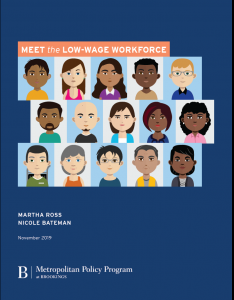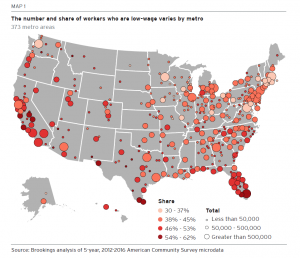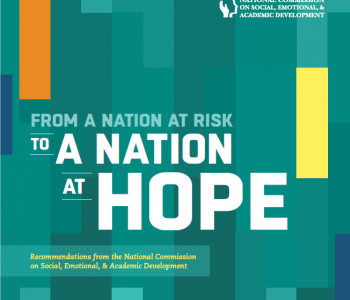 What We're Reading
What We're Reading
Low Wage Work and Workers
Meet the Low-Wage Workforce
 A new report from the Brookings Institute has found that low-wage work is more prevalent than expected.
A new report from the Brookings Institute has found that low-wage work is more prevalent than expected.
“As globalization and automation reshape the labor market, workers today must navigate a changing economic landscape. Some people and places are poised to do well; others, less so. One thing that is clear is these economic forces favor workers who have higher levels of education and earn higher wages. Low-wage workers risk becoming collateral damage, struggling to find their footing in the labor market and an educational system riddled with inequities.”
“The data presented here show the complexity of the labor market and the pervasiveness of low-wage jobs. Low-wage work can be an entry point into the working world for young people as well as a chance to carry out useful and productive activities, particularly for those who have a choice in whether to work and what type of work to do. Troublingly, however, low-wage work also serves as a source of economic hardship for millions of workers and their families.”
“Labor market conditions are not acts of God or inevitable. They are shaped by policies, investments, institutions, and norms. Nor are citizens, workers, government, and businesses helpless against impersonal market forces. They have agency. Policies, investments, institutions, and norms can be changed- although, admittedly, it is rarely easy or quick to do so.”
(Quotes above are from the report) Click on the report cover image to read the entire report.
Recommendations of the report center around three broad categories:
- Improve worker skills
- Address discrimination and bias in the labor market and educational systems
- Promote good jobs through economic and workforce development
Based on the map above, 46%-53% of the workforce in Flagstaff is employed in low-wage work. This is a factor that is driving both our high-quality preschool expansion and work-based learning efforts of LAUNCH Flagstaff.










